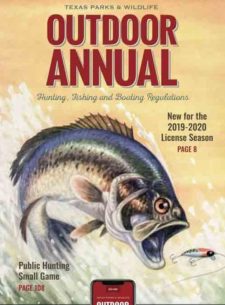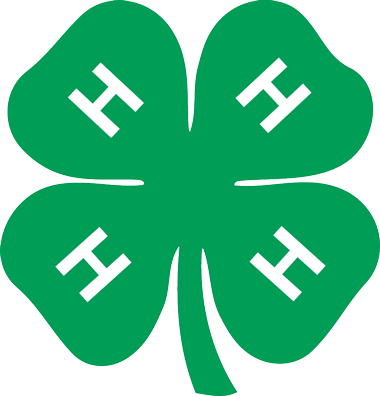
| Bobcat | |
 |
Bobcats can be found throughout Texas. The Bobcat is a medium-sized, reddish brown or grayish cat. Its ears usually have small tufts at the tips, and its fur is longer on the sides of its head than on the rest of its body, forming a ruff. They have a short tail, long legs, and large feet. For more info please see: https://tpwd.texas.gov/huntwild/wild/species/bobcat/ Picture source: https://tpwd.texas.gov/newsletters/eye-on-nature/2014spring/page2.phtml |
| Coyote | |
 |
A slender, dog-like carnivore, coyotes are common throughout Texas and may live alone or in small “packs” of up to 6 individuals. For more info please see: https://tpwd.texas.gov/education/resources/texas-junior-naturalists/watching-wildlife/coyote Picture source: https://tpwd.texas.gov/education/resources/texas-junior-naturalists/watching-wildlife/coyote |
| Dewclaws | |
 |
A dewclaw is a on the foot of many mammals, birds, and reptiles. It commonly grows higher on the leg than the rest of the foot. In white-tail deer and wild hogs it does not make contact with the ground when the animal is standing. The name refers to the dewclaw’s alleged tendency to brush dew away from the grass. On dogs and cats the dewclaws are on the inside of the front legs. Although many animals have dewclaws, other similar species do not. Text source: https://en.wikipedia.org/wiki/Dewclaw Picture source: http://www.mynatureapps.com/wild-hogs/ |
| Fox Squirrel | |
 |
Several species of squirrels make their home in Texas, but the one with the widest distribution is the fox squirrel. It prefers an open, parklike woods where large mature trees shade the forest floor and prevent the under-brush from flourishing, but it can adapt to a variety of forest habitats. It is most abundant in the eastern third of the state, and distribution in the wild is about one squirrel for every two or three acres. For more info please see: https://tpwd.texas.gov/publications/nonpwdpubs/introducing_mammals/squirrels/ Picture source: https://tpwd.texas.gov/publications/nonpwdpubs/introducing_mammals/squirrels/ |
| Heel Pad | |
 |
Can also be called a metacarpel pad |
| Length & Width | |
 |
Source: https://www.motherearthnews.com/nature-and-environment/tracking-animals-zmaz89jfzraw |
| Lobes | |
 |
Picture source: https://www.michigan.gov/dnr/0,4570,7-350-79135_79218_79619_84911_84912-146656–, |
| Mountain Lion | |
 |
The Mountain Lion has the widest distribution of any wild cat, from Canada to South America. In Texas, the Mountain Lion is found throughout the Trans-Pecos, as well as the brushlands of south Texas and portions of the Hill Country. For more info please see: https://tpwd.texas.gov/huntwild/wild/species/mlion/ Picture source: https://tpwd.texas.gov/education/hunter-education/online-course/wildlife-conservation/non-game-animals |
| Opossum |
 |
Opossums are cat-sized mammals with a pointed snout, grayish fur, small ears, and a long, scaly tail. It can use its tail to hang from tree branches, and it has paws with opposable “thumbs.” Males are usually larger and heavier than females. For more info please see: https://tpwd.texas.gov/huntwild/wild/species/oposum/ Picture source: https://tpwd.texas.gov/education/hunter-education/online-course/images-conservation/Opossum627.17_149.png/image_view_fullscreen |
| Outdoor Annual | |
 |
Is the summary of Texas hunting, fishing and boating regulations. Here is the link: https://tpwd.texas.gov/regulations/outdoor-annual/ There is also an app to use on mobile devices. When buying a hunting or fishing license this is normally given to the purchaser. Be sure to be using the latest edition. |
| Raccoon | |
 |
The Common Raccoon is between 33 to 45 in. (84 to 104.5 cm) long and weighs 7 to 20 lb. (3 to 9 kg). It has dexterous hands. Each hand and foot has five fingers and toes. Common Raccoons are stocky animals with short legs and small, rounded ears. Their fur is gray, with dark black markings around their eyes, and black bands on their tail. Their belly and muzzle are lighter colored while the feet are darker gray. Raccoons have coarse, medium-length fur and a very bushy tail. For more info please see: https://tpwd.texas.gov/huntwild/wild/species/raccoon/ Picture source: https://tpwd.texas.gov/education/water-education/stateofwater/wildlife |
| Skunk | |
 |
Striped Skunks are largely nocturnal and rarely leave their dens until evening, returning early in the morning. In late fall they become extremely fat. In Texas, they seem more active in winter than in the heat of summer. For more info please see: https://tpwd.texas.gov/huntwild/wild/species/skunk/ Picture source: https://tpwd.texas.gov/publications/nonpwdpubs/introducing_mammals/skunks/ |
| White-Tailed Deer | |
 |
White-tailed deer are found all over the United States. There are an estimated four million white-tailed deer living in Texas. Male deer are called bucks. Female deer are called does. Only the buck will have antlers. For more info please visit: https://tpwd.texas.gov/education/resources/texas-junior-naturalists/watching-wildlife/white-tailed-deer Picture source: https://tpwd.texas.gov/landwater/land/habitats/post_oak/deer/ |
| Wild Hog | |
 |
Wild hogs (also knwon as feral hogs) are unprotected, exotic, non-game animals. Feral hogs may appear basically the same as domestic hogs and will vary in color and coat pattern. A mature feral hog may reach a shoulder height of 36 inches and weigh from 100 to over 400 pounds. A male wild hog is called a boar. A female pig is called a sow. For more info please visit: https://tpwd.texas.gov/huntwild/wild/nuisance/feral_hogs/ Picture source: https://feralhogs.extension.org/ |
